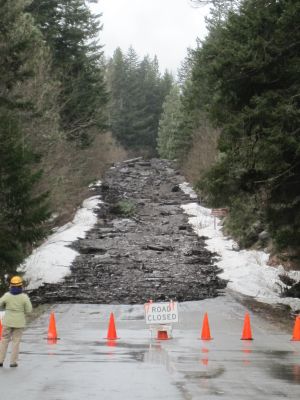Some national forests can’t keep up with runoff road damage
PUBLIC LANDS -- Reports are coming in this week from national forests in central Montana and northcentral Washington, where officials say they have staggering road damage from spring runoff this year.
Word to the wise outdoorsman: Call ahead to for forest road conditions.
The Okanogan-Wenatchee National Forest says that more than $3.75 million in damages to its 8,000-mile road system aren't likely to be fully repaired this summer.
Read on for details.
According to the Associated Press, Okanogan-Wenatchee forest officials fear that the dozens of mud-covered debris-ridden roads assessed is just the beginning. The Forest has applied for emergency funds to help pay for repairs.
What they’ve seen so far is far worse than most years. Major mudslides this spring have twice trapped campers overnight on the national forest in Chelan and Okanogan counties. All were retrieved the next day after road crews carved temporary paths through the still unstable mud so people could leave with their vehicles. Those roads and many others remain closed, and the Forest Service has no estimate of when they can reopen.
More than 90 sites need repairs that will cost over $5,000 across the forest, as melting snow saturated steep hillsides and caused landslides, or melting runoff dug gullies into the roads or plugged culverts.
“We probably won’t be able to repair all of the roads this summer,” said Forest Service spokesman Roland Giller. He said with a limited time when roadwork can be done, and the millions of dollars they’ll need to do it, the agency is working to prioritize which roads will get attention, and which will have to wait. The Forest has applied for funds from the Emergency Relief for Federally-Owned Roads program, he said.
Rangers from each district will prioritize the roads on their own districts before they meet later this month to come up with forest-wide priorities.
Giller said there’s a potential for more mudslides or road washouts as this winter’s heavy snowpack continues to melt. And more damage will likely be discovered in the higher elevations, where snow still prevents vehicle access.
Forest Hydrologist Greg Kuyumjian said a colder and wetter spring combined to create extraordinary runoff conditions. He said for the combined months of March through May, this year was the wettest in the 117 years of records kept in North Central Washington. “And here’s the kicker: In the 117 years of records, it’s the fifth coldest, too,” he said.
Because the ground is already saturated, the runoff makes its way directly to rivers and streams, he said.

